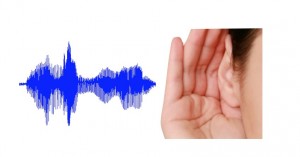 My recent work probes the continuity of statistical learning as a powerful language acquisition mechanism throughout life. My research seeks to understand the neural plasticity of language learning by measuring dynamic neural changes with electrophysiological techniques.
My recent work probes the continuity of statistical learning as a powerful language acquisition mechanism throughout life. My research seeks to understand the neural plasticity of language learning by measuring dynamic neural changes with electrophysiological techniques.
Role for lifelong tuning of linguistic representation: In a series of language training experiments, I studied the experience-dependent malleability of people’s syntactic knowledge. I found that sensitivity to native language statistical information continues across the life span, even after linguistic knowledge has already been acquired and consolidated. Eye-tracking results showed preschoolers and adults were able to reshape their existing syntactic preference about specific verbs (verb bias) by implicitly keeping track of the co-occurrence information about each familiar verb and upcoming syntactic structures in their recent language experience. My work highlighted the role of a flexible learning system in our lifelong experiences of language usage.
- Qi Z., Yuan S., Fisher C. L. (2011) Where does verb bias come from: Experience with particular verbs affects online sentence processing, In N. Danis, K. Mesh, & H. Sung (Eds.), Proceedings of 35th Boston University Conference on Language Development. 500-512. Somerville, MA: Cascadilla Press.
- Qi Z., Fisher C. L. (2013) Learning new linguistic information about familiar verbs in 5-year-olds and adults. Society for Research in Child Development.
- Ryskin R. A., Qi Z., Duff M. C., & Brown-Schmidt S. (in press). Verb biases are shaped through lifelong learning. Journal of Experimental Psychology: Learning, Memory and Cognition.
- Ryskin R. A., Qi Z., Duff M. C., & Brown-Schmidt S. (2016) Constraints on adaptation to syntactic variability between and within speakers. CUNY Sentence Processing Conference.
- Sanchez Araujo Y., Georgan W. C., Qi Z., Arciuli J., & Gabrieli J. D. E. (2016) Developing sensitive measures of statistical learning for school-age children. Psychonomics Annual Meeting.
Neural plasticity of linguistic statistical learning: How does the human brain adapt to the dynamic change of statistics in the language input? I used Event-related potentials (ERPs) and EEG to explore learning-induced neural plasticity as learners’ continuously accumulate novel linguistic information. In the context of verb bias learning, the ERP results revealed a dynamic shift in the nature of sentence processing as learners’ experience with novel verbs increased. In the context of cross-situational meaning acquisition, EEG characteristics during the visual processing of corresponding scenes separate successful from less successful vocabulary learners.
- Qi Z., Garnsey S. M. (2012) Neurocognitive plasticity in verb bias learning: an ERP study. Cognitive Neuroscience Society.
- Qi Z., Garnsey S. (2012) Individual difference in verb bias learning: an ERP study. CUNY Sentence Processing Conference,
- Qi Z., Finn A., Ghosh S., Minas J., Chan B., & Gabrieli J. D. E. (2014). Temporal dynamics of EEG topographic similarity during successful language learning. Society for Neurobiology of Language.
